#Egypt Greco-Roman Period
Explore tagged Tumblr posts
Text
Karnak and Luxor Temple Complexes Egypt
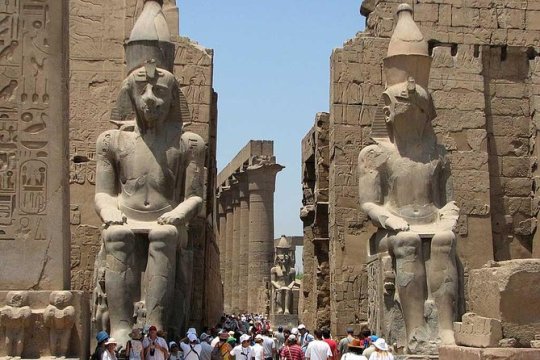
View On WordPress
#18th Dynastic Theban Triad#Abu El-Haggag Mosque#Alexander the Great#Amenhotep III of the 18th Dynasty#Amun The Creator God#Amun-Ra Suen God#Ancient Egyptian Culture#Ancient Egyptians#Ancient Greeks#Arabic word Khurnaq#Avenue of the Sphinxes#Colonnada of Amenhotep Ill and Tutankhamun#East Bank Nile River#Egypt Greco-Roman Period#Egypt Middle Kingdom#Egypt New Kingdom#Egyptian Hieroglyphs#Egyptian Ipet-isut (The Most Selected of Places)#Egyptian New Kingdom#Egyptologist#Egyptologist Professor Gaston Maspero#Emperor Diocletian#Festival of Opet#Gebel el-Silsila Area South-Western Egypt#General Ptolemy#God Amun#God Hathor#Goddess Mut#Hatshepsut Obelisks#Horemheb
0 notes
Text
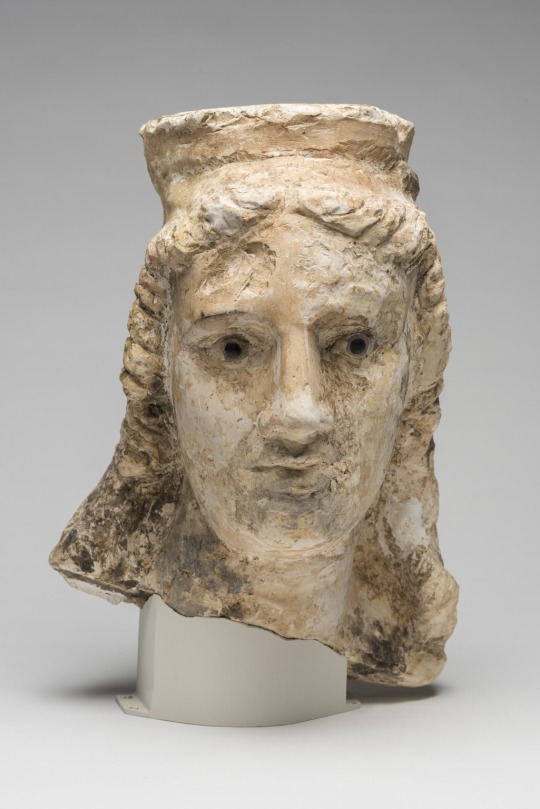

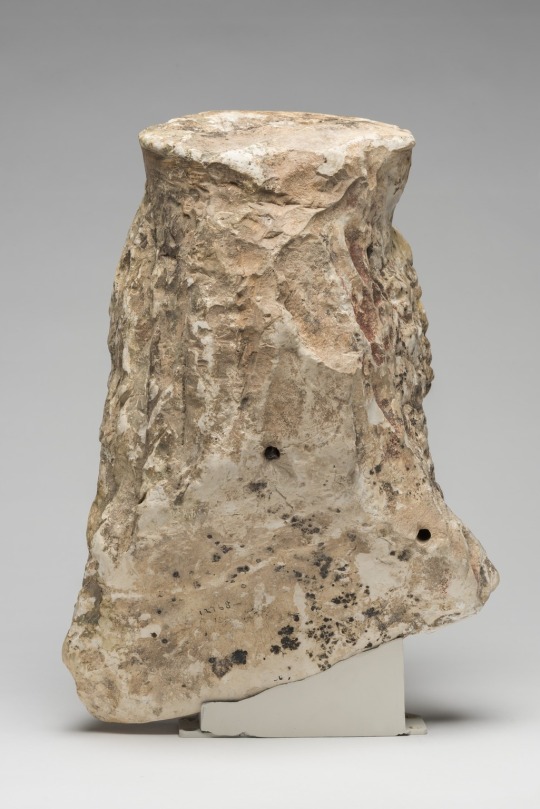
~ Female Head.
Culture: Graeco-Egyptian
Place of origin: Akhmim, Egypt
Date: 1st century B.C.-A.D. 1st century
Period: Ptolemaic Period-Roman Period
Medium: Limestone, stone, pigment
#ancient#ancient art#history#museum#archeology#ancient egypt#ancient sculpture#roman#ancient history#archaeology#Greco-Roman#female head#portrait#akhmim#Egyptian#egyptology#Egypt#ptolemaic#roman period#1st century B.C.#a.d. 1st century
283 notes
·
View notes
Text
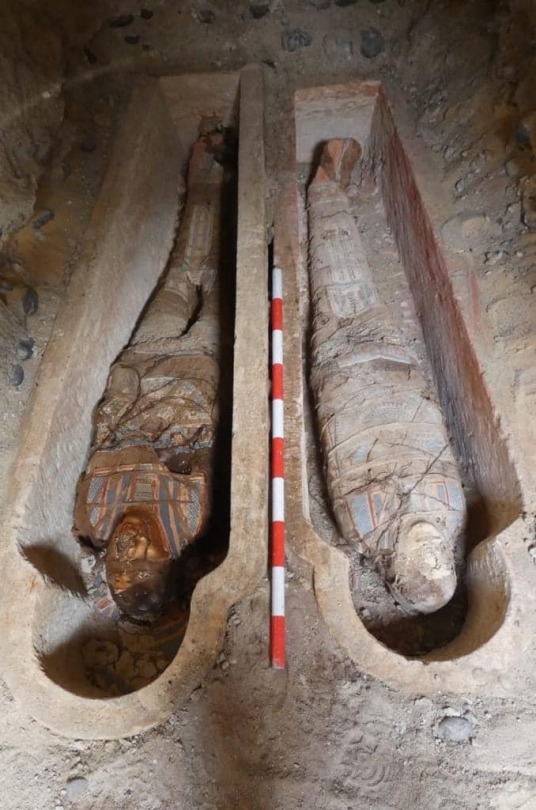
Archaeologists Unearth Mummies with Golden Tongues in Egypt
Archaeologists have unearthed several ancient tombs with dozens of mummies—including some with golden tongues.
Researchers made the findings during excavations at the ancient city of Oxyrhynchus, an extensive archaeological site located around 100 miles south-southwest of Cairo near the modern-day municipality of Al-Bahnasa in Minya Governorate.
Oxyrhynchus was "very important" during ancient Egypt's Greco-Roman period, which spanned hundreds of years from the late fourth century B.C. until the 7th century, Esther Pons Mellado and Maite Mascort, co-directors of a Spanish archaeological mission at the site.
"[It[ was the second city of Egypt after Alexandria. There was a great business and cultural relationship between these two cities," they said.
The Greco-Roman period began with Alexander the Great's conquest of Egypt—then controlled by the Persians—in 332 B.C. An ancient Greek state known as the Ptolemaic Kingdom was subsequently established in 305 B.C., which ruled Egypt until 30 B.C. when the region was conquered by the Romans.
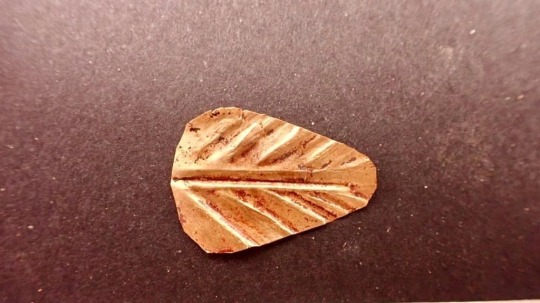
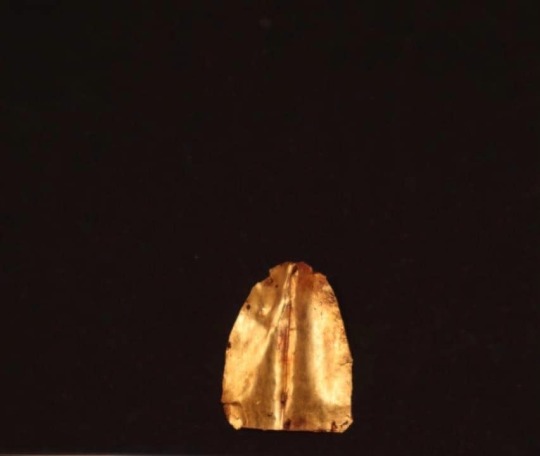
The territory became a province of the Roman Empire, which eventually divided into a western and eastern portion—with Egypt belonging to the latter. The Roman period ended around A.D. 641 when Arab forces conquered Egypt.
The latest excavations at Oxyrhynchus took place in November and December 2023. Over the course of these investigations, Pons Mellado, Mascort and colleagues discovered several tombs from the Greco-Roman era, as well as human remains and artifacts.
The finds include two tombs dating to the Roman period, built with limestone blocks. In these tombs, the archaeologists uncovered more than 20 mummified individuals covered in multi-colored wrappings, as well as papyri with Greek texts and mud seals with Egyptian iconography.
Two of these mummies were found to have pieces of gold shaped into the form of a human tongue placed where their real tongue was. Such golden tongues have previously been found at Oxyrhynchus and, indeed, other archaeological sites in Egypt.
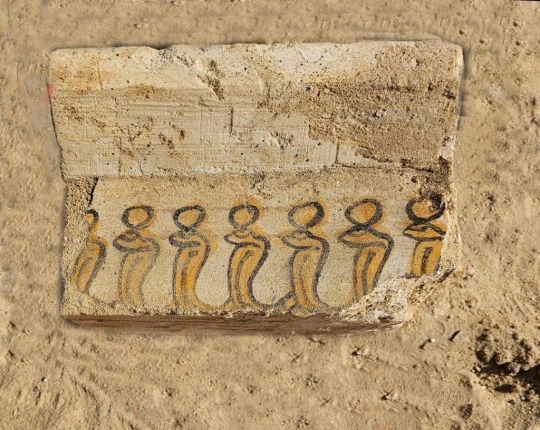
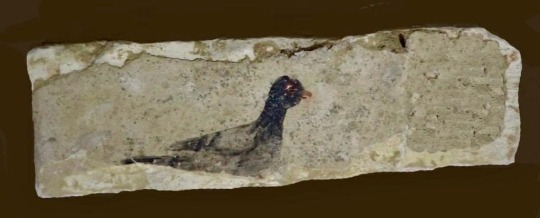
"Until now we have found 16 golden tongues in Oxyrhynchus," Pons Mellado and Mascort said.
Experts think the ancient Egyptians may have placed gold tongues on some human remains to enable the spirits of the deceased to communicate with Osiris—the god of the underworld—and to help them cross into the afterlife.
"The Egyptian people deposited the golden tongues on the tongue to restore vital functions to the dead and also so that the body remained intact in the afterlife. For the Egyptians, gold was the flesh of the gods," Pons Mellado and Mascort said.
In addition to the Roman-era tombs, the archaeologists also discovered three "hypogea"—or underground tombs—dating to the Ptolemaic period that had been excavated beneath the natural rock.
In these hypogea, the researchers uncovered several more mummies covered in colorful wrapping, a number of anthropomorphic stone sarcophagi (some of which were closed) and various terracotta statues depicting the goddess Isis-Aphrodite, among other artifacts. This deity is a form of the Egyptian goddess Isis combined with the fertility aspects associated with the Greco-Roman goddess Aphrodite.
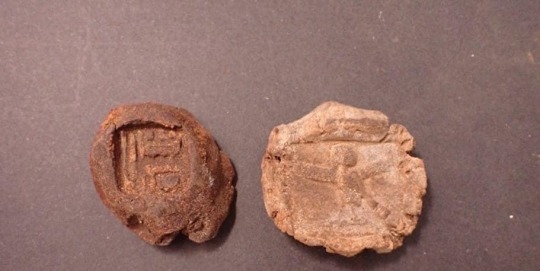

In one of the hypogea, the team also found many multi-colored limestone blocks with decorations, including depictions of humans, snakes, pigeons and plants.
All these findings are very important for the history of the funerary world in Oxyrhynchus," Pons Mellado and Mascort said.
"It is the first time that we have found an Oxyrhynchus terracotta with the image of Isis-Aphrodite, and the first time that this kind of piece has appeared in this area of Middle Egypt. The limestone blocks with decoration [are also very important]."
The limestone blocks—another new finding at Oxyrhynchus—appear to have come from some kind of construction, although the nature of the structure is unclear.
By Aristos Georgiou.
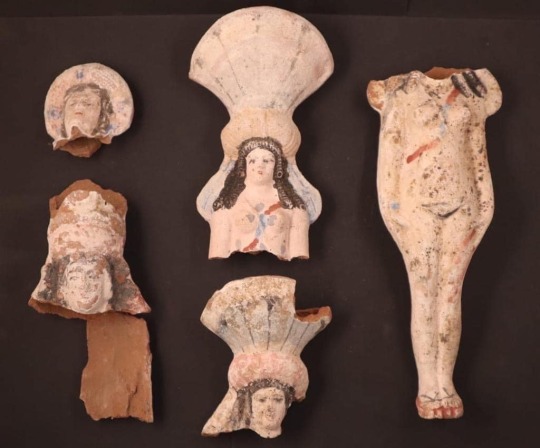

#Archaeologists Unearth Mummies with Golden Tongues in Egypt#ancient city of Oxyrhynchus#Greco-Roman period#ancient graves#ancient tombs#ancient artifacts#archeology#archeolgst#history#history news#ancient history#ancient culture#ancient civilizations#ancient egypt#egyptian history#roman history
83 notes
·
View notes
Text


Examining the "Feminine"
mythology & meaning of venus, taurus, and libra ♀
by thesirenisles



Dark/Night Mode recommended. Do not steal, rewrite, or copy any of my original writing. Photos are from Pinterest or collaged by me. If it does not apply, let it fly. All rights reserved. © 2024 The Siren Isles
Your Majesty,
It is as if you manifested in this world to be adored and cherished. Blessed with royal charisma and a natural grace, your Venusian energy is often happily welcomed. Even with afflictions, there is just something(s) about you that others value.
A Venusian is blessed to enjoy the material aesthetics and splendors of this world. They understand high-quality, material value in items and prefer the nicer things. They have an inherent taste for what is aesthetically pleasing. The Venusian tends to collect all of these things... while being on the journey to understanding that they can't collect people.
At your core… you are here to create and increase the value, beauty, harmony, and love in the world around you.
It's all about life’s pleasures when you’re a child of Venus and they float diplomatically, steadily seeking pleasure of all forms, whether this be from material means, the five senses, or even the addictive taste of social relevance.
╰┈➤ Think: Serena VDW from Gossip Girl, waltzing around with her “Golden Retriever” energy lol. Beyoncé, (Venus 1H) no matter the rumors... honestly can she actually ever be canceled? Jasmine Tookes (model) has such a Venusian complex, Venus 1H)
With this energy dominant in the natal chart, you can become a natural feminine role model for the women in your life. Venus is a benefic and a lucky chart ruler energy. But, this does not come without its lessons usually involving worth, value, and balance.
-`♡´--`♡´--`♡´--`♡´--`♡´--`♡´--`♡´--`♡´--`♡´--`♡´--`♡´-
In astrology, the gifts of Venus manifest in:
⋆˚⋆˚ ❥ TAURUS (fixed Earth) 2nd House (Possessions, Values, Skills) understands tangible & personal worth but is seeking to understand the value of intangible beauty in life.
⋆˚⋆ ❥ LIBRA (cardinal Air) 7th House (Marriage and Partnership) understands how to create beautiful social and romantic relationships based on justice, but is seeking to understand the true value of self love & worth.
-`♡´--`♡´--`♡´--`♡´--`♡´--`♡´--`♡´--`♡´--`♡´--`♡´--`♡´-
If you control the feminine deity,
you control the feminine.



VENUS (Aphrodite to the Greeks, Hathor to Ancient Egyptians) is the Goddess of love, feminine energy, erotic desire, harmony, balance, and to some motherhood.
Greco- Roman Mythology:
When consuming any ancient mythological texts, one must consider the social and political attitudes or even agendas during that time period to add context. This female social status very clearly carries over into their mythology.
-`♡´--`♡´--`♡´--`♡´--`♡´--`♡´--`♡´--`♡´--`♡´--`♡´--`♡´-
🐚 In Ancient Greece: "Greek women had virtually no political rights of any kind and were controlled by men at nearly every stage of their lives." (source)
🐚 In Ancient Rome: "Unlike society in ancient Egypt, Rome did not regard women as equal to men before the law." (source)
Glamour is the enemy of truth.
Her sordid birth is GLAMOURIZED in an undeniably gorgeous painting: “Birth of Venus” by Sandro Botticelli; 1486 (see below).
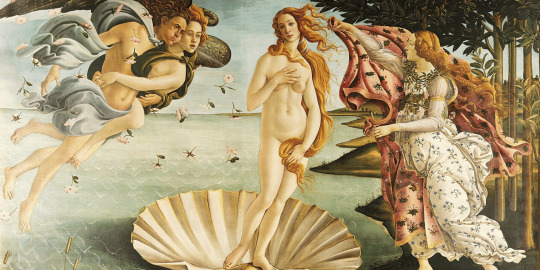
🐚 This beautiful portrayal led to Venus being OFTEN glamourized by women, especially here on Tumblr. We feel empowered by her, which is justified. But, her Greco-Roman mythology is anything but empowering. No shade, but it embodies the social limits and pain for women within the dominant European culture. 🐚 The Goddess is often presented on display, (as above) her womanhood made a spectacle! Her very "feminine" form is written to have manifested from the discarded sexual organs of a male God, (Uranus), Also then.. technically her father.
This is a DIVINE Goddess and YET ...
Her adoptive father, Jupiter (Zeus), literally sold her to her "husband", Hephaestus (Vulcan), like property.
She has petty grudges stemming from vanity, tormenting beautiful young maidens.
She engages in frequent, extramarital love trysts with a sibling, Ares (Mars)
... & we're supposed to romanticize this??? ✋🏾(It's giving Cersei Lannister).
-`♡´--`♡´--`♡´--`♡´--`♡´--`♡´--`♡´--`♡´--`♡´--`♡´--`♡´-
🐚 Negative divine feminine imagery creates a space to demonize the many beautiful traits associated with Venus! This became especially apparent after the bloody global shift into Christian and Catholic dominance.
-`♡´--`♡´--`♡´--`♡´--`♡´--`♡´--`♡´--`♡´--`♡´--`♡´--`♡´-
and alas life imitates art:
"HOTTENTOT" VENUS
🐚 The Greco-Roman/ European depiction of Venus being on full display makes a disgusting reappearance in their humiliation, brutalization, and rape of naturally curvy and voluptuous African women. 🐚 Most notably, a South African Khoikhoi (or Khoisan) woman named Saartjie (or Sara) Baartman, who was fiendishly deemed the: "Hottentot Venus." (a racial slur; see image below) Her divinely feminine body was, like Venus , put on live display and defiled for ANY paying Europeans. Most all had never witnessed such divine beauty, 1810. (source) 🐚 They were socially conditioned to gawk, hyper-sexualize, and inflict pain upon the female form. Even after death, she was taken in 1816 and displayed in a French museum until as late as 1985."

Venus Figurine:
🐚 This grotesque misuse of Venus in the news article title takes its inspiration from: The Upper Paleolithic “Venusian figurine”, an example the “Venus of Willendorf” (28-25,000 BCE; see below) which also shows pronounced hips and figure. Men were said to carry these in thought of women. However, the exposure is none short than Venus' own in the Botticelli painting.

🐚 While similar in their representation, the Greco Roman translation of this Goddess is far too crass and none of Venus' listed Greco-Roman origin stories have any symbolic feminine connection or adoration to the actual bull or scales! LOL. So, I went on my search to connect the lost ancient mythological mysteries that did not make it past the Euro-Colonialism eradication and re-naming. 🔎🕵️


"Mother of the Pharaohs"

taurus: the horned cow🐄
HATHOR is the (Ancient Egyptian Goddess of the Divine Feminine, Love, Fertility, and even expression of female sexual desire). The Goddess is a cow or a maiden with cow horns, typical symbol of Taurus.
How is Venus connected to Hathor?
🐄 Since the moment they step foot in the "ancient New York City" that was Ancient Egypt, their European neighbors were enamored of Ancient Egypt's Neter (Gods), especially the "Mother of the Pharoah's". The Greco-Roman nations would come to conquer Egypt. Under Alexander the "gr8" in 332 B.C., they renamed one of the seven major African cities that worshipped Hathor: "Aphroditopolis" or City of Venus and made it a CAPITAL of its district. 🐄 The Venus planet symbol ♀ is literally the African Ankh. This fascination and renaming is like the renaming of Thoth into Mercury, Hermes, or "Hermes Trismegistus". (some say they explain it with "reincarnation.") You, as the reader, decide which mythology matches the energy best for yourself.
Mythological Origins:
🐄 Hathor is said to be born from the eye of Ra, like Sekhmet. She was thought of as beauty, love, grace incarnate. Her presence is said to exude an aura of allure, femininity, and attraction. She embodies passionate expressions of desire, love, and the pursuit of exquisite living. 🐄 A maternal symbol, she is considered the mother or nourisher of all of the Pharaohs. The presence of the Goddess in a Pharaoh's royal court is essential to ensure the connection to the divine. 🐄 Music and dance are another keystone of Hathor's energy. The female body is created to release tension and trauma with the very movement of your hips! Connect with your inner Goddess! 🐄 Symbols for Hathor: Cows, Sun disk with Cow Horns, Lotus Flower, Sistrum, Protective Cobra, Mirrors, and Cosmetic jars.
Why the cow? 🐄
🐄 Ancient Kemet (Egypt) connected their Gods to the natural skills, gifts, and talents of the animals within their ecosystem. This is the reason their Gods’ are called Neter, like “Nature". (For example: Lions of Leo are native to Africa) 🐄 The African cattle breed: “Ankole-Watusi" has female cows with very large horns… similar to the male bull. These horns are depicted holding the sun disk upon the head of Hathor, (as seen above & below in the Egyptian bas reliefs).

🌷Cows are the mothers!🌷
┈➤ Bulls are the male cow. Heifers are the females without offspring.
🐄 The natural feminine physical traits associated with the cow are: plush eyelashes, a pretty symmetrical face, pronounced nipples that produce milk, and wide hips. 🐄 However, the cow also provides fertilizer, which brought forth the agriculture of the African Nile Valley. The cow , not bull...is a perfect fertility symbol.
Hathor provides the Pharaoh the ANKH or “Venus planet symbol.” ♀ (see below)

Bas Relief of the goddess Hathor, Temple of Horus, Edfu, Egypt, Ptolemaic Period, c251 BC-c246 BC
"soft life"🐄
🐄 I imagine a Taurus (or 2nd houser) thriving in the energy of the cow, frolicking the lush green lands, eating their fill, and providing nourishment. If the 5 senses of a Taurus are satisfied, they are content. 🐄 They will create this value around them, often ensuring that their spaces smell good, the food is prepared excellently, and only the best to drink it down. Access to a Taurus is access to their natural value. 🐄 They will bless you with gifts that you need because they care enough to pay attention and want to increase your value too.. all while being loyal! I love Taurus energy, so similar to cancer... but less mood swings.


(noun). a person, especially a woman, who pursues a lifestyle of buying luxury items or of seeking them as gifts from lovers and admirers.
🐄 Taurus most often manifests Venusian gifts in the physical and sensual. This can be "classically" feminine physical traits, such as wider hips or ample bosoms, etc. On a negative, these traits can be hyper-sexualized or demonized while they are young, like their sister sign, Scorpio. But, it can also be literal material gifts and blessings.
🐄 On a positive, Venus will bless them with options! Many suitors will present these Earthly gifts, writing love poems to woo the feminine cow. Taurus may find pride in the flattery that comes with this treatment and beauty privilege. They are used to being adored (unless badly aspected).
Beware the love Bomb.
🐄 In love, these cows are especially vulnerable to being victims of love bombing. (When a potential suitor bombards one too quickly with serious promises, excessive flattery, and material gifts. This can be friends as well.🧿) The key here is to not allow flattery to falsely parade as love.
🐄 Taurus (2nd house) carries a natural royal energy and an air of grace. It’s your silent, but solid confidence of being a fixed sign. They are extremely loyal when they consider you kin. However, this dogmatic belief system can result in you charging your horns into sketchy territory. This reminds me of John Snow and his “honor” energy (from Game of Thrones).
it’s nearly impossible to change your mind.🌸
🐄 In love, this can be ignoring all of your friends over a partner who is not good for you. You find yourself giving all of your love, loyalty, and even money (most have a language of gift giving and receiving) to an undeserving soul. On the bright side, these tragedies will result in a tower moment marked with major transformation (also like sister sign Scorpio).🌷 🐄 Ultimately, I feel and often see that the Taurus (2nd house) native will be challenged to vacate the creature comforts in which they enjoy in order to transform like their sister sign, Scorpio. When in doubt, do NOT choose the Hephaestus (safe choice).


"Queen of the Earth"

libra: moral scales ⚖️
MA'AT (Ancient Egyptian Goddess rules balance, justice, harmony, law, order, and morality.) She is depicted as a maiden adorned with beautiful wings, very similar to Isis.
⚖️ I often find my beautiful Libran queens confused about the meaning of the scales and how it connects to femininity. I hope to be a light bearer. ⚖️ Ma'at represents the typical light feminine attributes in my opinion (elegance, forgiveness (justice), and nurturing energy (Venus). Similar to Librans, who inherently know how to enact these gifts create harmony in their social spaces and float amongst varying personalities. (Think: Lady Liberty or Lady Justice). However, the sign is the masculine side of Venus.
Mythological Origins:
⚖️ Ma'at is also a daughter of Ra, sometimes written as his wife. She manifested with Ra from the waters of Nun (Chaos). Her existence brought order to the realms . She is often depicted holding an ANKH and a scepter to symbolize power and eternal life. (See Below) Some sources say that she was married to Thoth (Mercury) and birthed 8 children, known as "The eight gods of Hermopolis." (Just like Aphroditopolis)
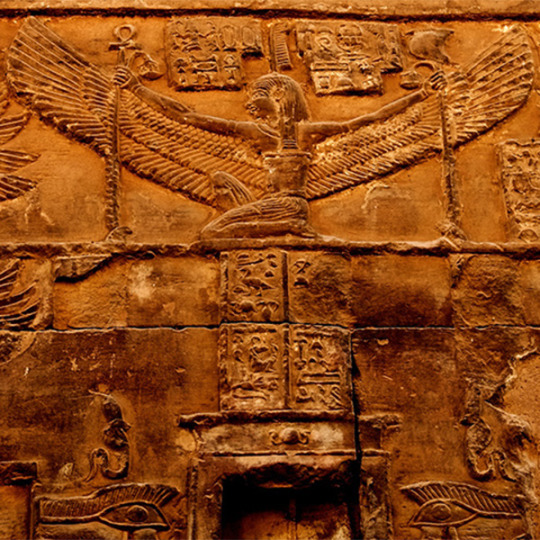
Why the Queen of the Earth?
⚖️ As mentioned, Ma'at was said to be present at the beginning. She was present when Ra stood upon her "mound" (seen above) for balance as he created the realm of Earth... ending chaos. This placed the Goddess in charge of the cycle of seasons, the movements of the sun, moon and stars, all parts of religion, relationships, and the moral actions of both mortal and God-alike. This is very powerful!
⚖️ The Libra native can carry very similar themes. In life, they may feel the need to regulate amongst their social circles and be the organized hostess. Cardinal energy blesses them with the drive to girl boss through anything!
⚖️ The ethical and spiritual foundation of Ancient Kemet was presented by a woman. The head of religious worship and justice was called "Priest of Ma'at". From this, you gather that Ancient Kemet was nothing as Egypt is today in terms of equality for women. Women were free to own their own properties, businesses, marry one-another, divorce their husbands, and even rose to be Pharaoh like in the case of Pharaoh Hatshepsut. (personal fave)
Why the scales? ⚖️

The Libran scales literally determined if a soul had lived their life with balance and morality! (7th House).
⚖️ The actions and morality of the Ancient Egyptian people were guided by a set list of commandments, known as the "42 Laws of Ma'at". These ancient texts predate the Bible, but have uncanny similarity in diction to the 10 Commandments. ⚖️ It was believed that Upon death, before one could enter the Duat (Underworld), the heart was weighed on the scales of Osiris (God of the Underworld) in comparison to a single feather of Ma'at. Osiris is linked to Saturn which is exalted in Libra. The weighing was done by Anubis (God of funerary practices and care of the dead).
“light as a feather”🪶
⚖️ If the heart weighed less or the same, the spirit was granted access to Aaru (a sort of heaven). This explains the scales of LIbra. If it did not, the heart was eaten and the native faded into nothingness.


(noun) a woman who acts as master of ceremonies, moderator, or who receives and entertains guests in her own home or elsewhere.
⚖️ The mythology of Ma'at is excellent... a little too excellent. She is like the oldest and favorite daughter who must be 100% perfect. Many Libra's may have father or projection issues in this way. The expectation of excellence begets pressure! ⚖️ This carries over into the relationships of course. This balancing act is where things get tricky for the Libra. This can manifest as people pleasing to keep the peace with friends, family, romantic partners, or co-workers. There can be a distaste for controversy or not wanting to damage the public image. It gives "Dollhouse" by Melanie Martinez vibes at its worse. Rich Auntie vibes at it's best!
Their scales will be tipped. ⚖️
⚖️ The Libras/7th housers will find themselves in situations where they have to STAND on their boundaries. It's like a self-actualization that has to happen. Venus is teaching them to respect and protect their Venusian gifts. Similar to Taurus. Venusian energy will bless you with generous suitors. BEWARE THE LOVEBOMBERS. ⚖️ They bear the reputation of almost needing to be in a relationship. This is obviously due to the 7th house ruling, but also stems from it's less favorable position with the sun.(Father). It is also kind of true, because it is apart of your life path. ⚖️ While it can be painful to have to experience relationship after relationship, these are apart of your life path and contribute to your glow up! To love and be loved is truly a blessing. You guys are blessed with so many loving friendships and romantic experiences!
Regina George?
⚖️ There can be some performative behavior and some judgment! After all, this is scales. Blessed with beauty, style, and grace... they can end up judging those who aren't. Mean Girl vibes. But, I believe this comes from the Libran urge to judge and lead the masses LOL. Ma'at energy. ⚖️ Despite any of this, Libra is the least slandered amongst the air signs (unless it’s Libra moon… I see quite a bit of slander? LOL.) Ma'at seems to bless the Libran with this air of favor. It's like they can really do no wrong, even sometimes after doing so. People are going to think the better of them 9/10 because the Libra has already established their character and value amongst social groups. The air just adds a bit more flow, allowing more harmonious energy in their relations.

Conclusion
♀ The intention of this post is to shed some light on lesser known mythology and symbolism of the planet Venus. I also believe that it is worth noting a very beautiful pattern among Venus and her signs.
♀ The Libran scales and Taurus Cow horns both resemble the female reproductive system. They also resemble the African Ankh symbol (of fertility and eternal life). Nature makes no mistakes and everything has duality, just as the Ancient Egyptians understood so well. It’s beautiful. (See below).

Thank you for reading!! Wishing you blessings!
@thesirenisles | masterlist | Enjoyed? Support!🧜🏾♀️
All rights reserved. © 2024 The Siren Isles

#thesirenisles#hathor#maat#ma’at#astrology observations#astro notes#astro community#natal chart#astro observations#libra#taurus#venus#astro placements#astrology memes#astro blog#astrology blog#astro#divine feminine#ancient kemet#ancient egypt#egyptian mythology#kemetic#kemet#ancient history#greek mythology#astrology#aphrodite#oshun#goddess#venusian
443 notes
·
View notes
Text
2,000-Year-Old Fayum Portraits from Roman Egypt: also known as "mummy portraits," these funerary paintings were often fastened to the coffins of the people they depicted
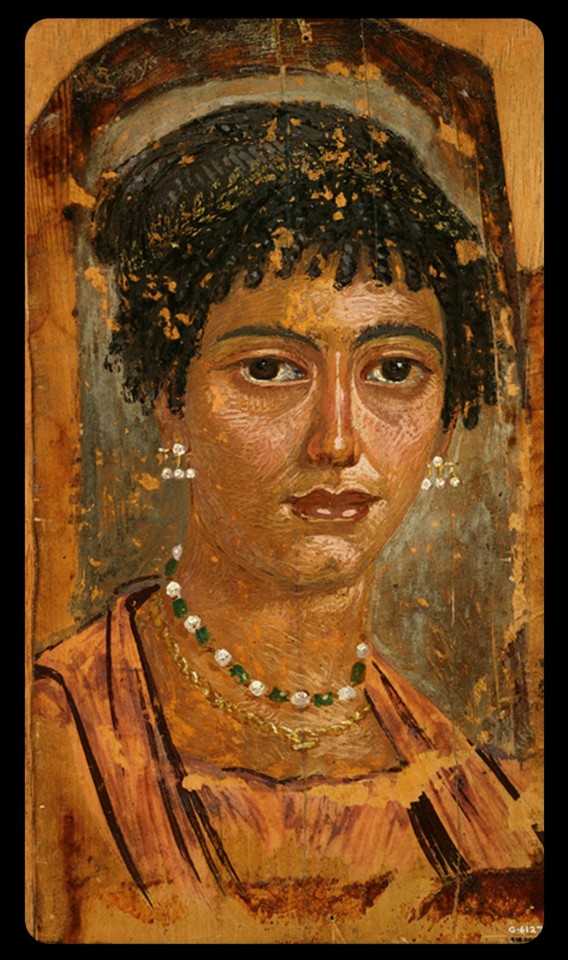
Above: Fayum portrait of a woman from Roman-occupied Egypt, c.100-110 CE
Fayum portraiture was a popular funerary practice among the upper-class families of Roman Egypt from about 50 CE to 250 CE. Given the high mortality rates for children during this period, many of these portraits depict children and youths, but adults were often featured, too.
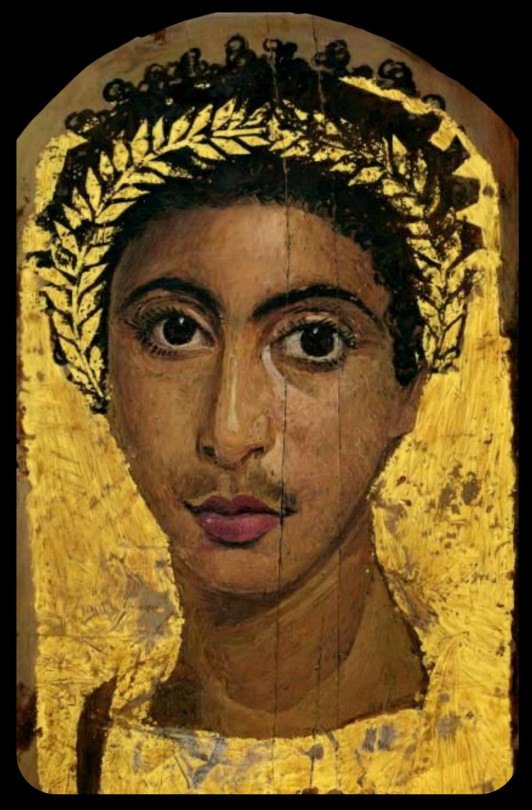
Above: portrait of a youth wearing a golden wreath, c.130-150 CE; the wreath and the background of the portrait are both gilded
The population of the Faiyum Delta, where most of these portraits were found, largely contained individuals with both native Egyptian/North African and Greek heritage. The Greek lineages can be traced back to the Ptolemaic period, when the Greeks gained control of Egypt and began to establish settlements throughout the region, gradually leading to a cultural diffusion between the Greek and Egyptian populations. The Romans eventually took control of Egypt in 31 CE, absorbing it into the Roman Empire and colonizing much of North Africa, but the demographics of the Faiyum Delta remained largely unchanged.
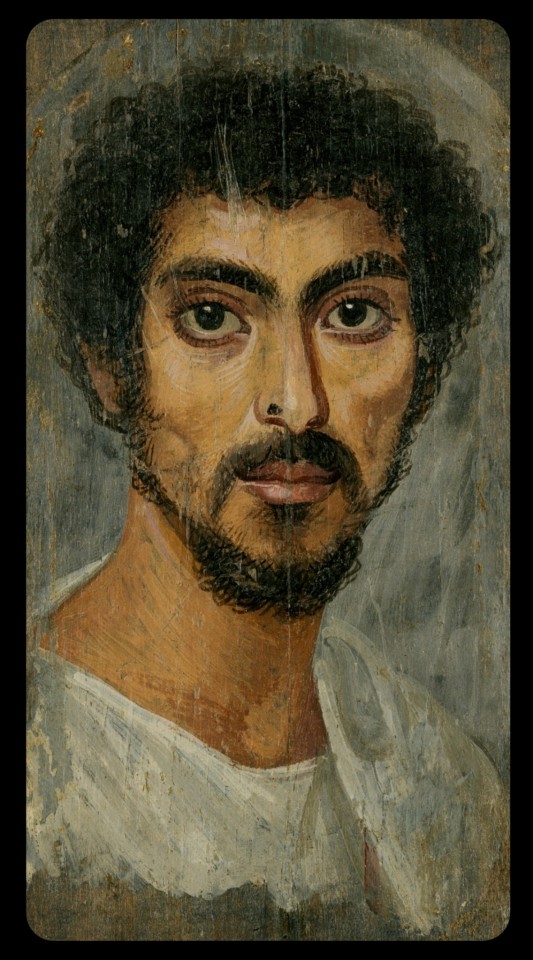
Above: portrait of a man with a mole on his nose, c.130-150 CE
Many of these Fayum portraits reflect the same blend of ethnic and cultural roots, depicting individuals with both Greek and native Egyptian heritage (a claim that is supported by both archaeological and genetic evidence). Some portraits may also depict native Egyptians who did not have any European ancestry, but had been integrated into Greco-Roman society.
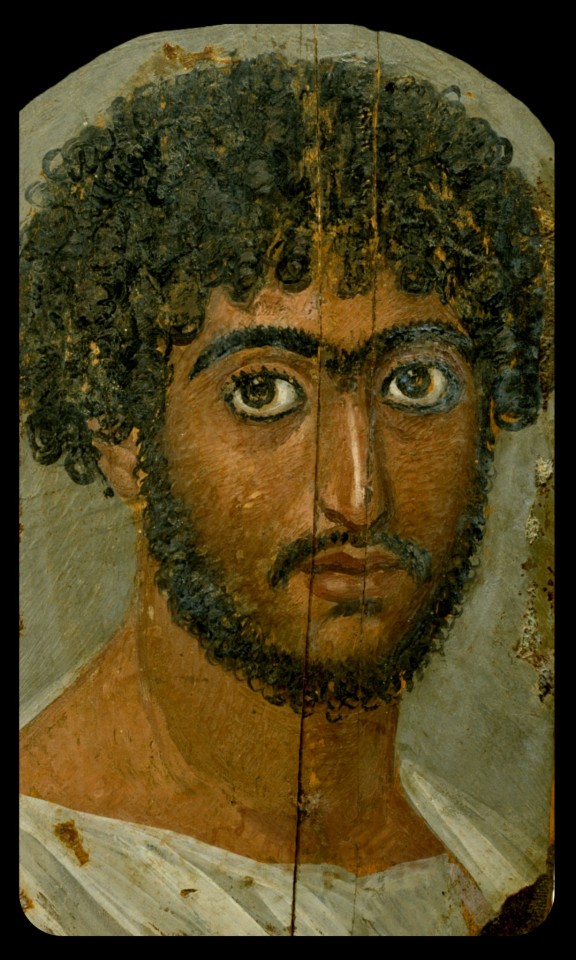
Above: portrait of a bearded man, c.170-180 CE
These representations of native Egyptians provide us with unique insights into the actual demographics of Roman-occupied Egypt (and the ancient world at large). Non-European peoples are rarely included in depictions of the classical world; it's also interesting to see the blend of cultural elements that these portraits represent.

Above: portrait of a priest of Serapis, c.140-160 CE; the man in this portrait is shown wearing a fillet/crown that bears the seven-pointed star of the Greco-Egyptian god, Serapis
As this article explains:
In the 1800s and early 1900s, Western art historians didn’t know what to make of these portraits. Scholars of Roman history labeled them Egyptian. Scholars of Egyptian history labeled them Greco-Roman. These binary academic classifications failed to capture the true complexity of the ancient (or, indeed, modern) Mediterranean. In reality, Fayum portraits are a syncretic form, merging Egyptian and Greco-Roman art and funerary practices. They reflect the cosmopolitanism of both Roman and Egyptian history.
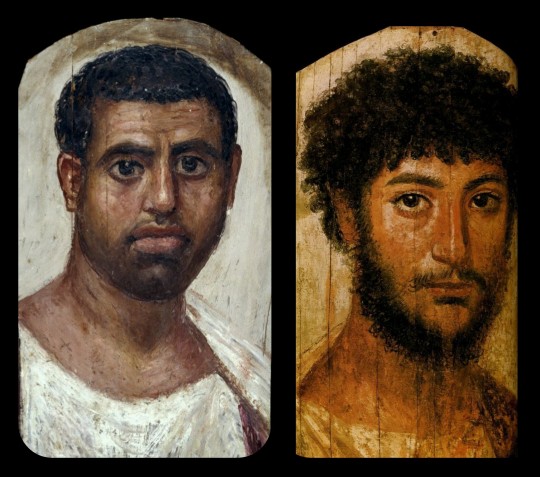
Above: portrait of a man, c.80-100 CE (left); portrait of a bearded officer, sometimes referred to as "Perseus," c.130-175 CE (right)
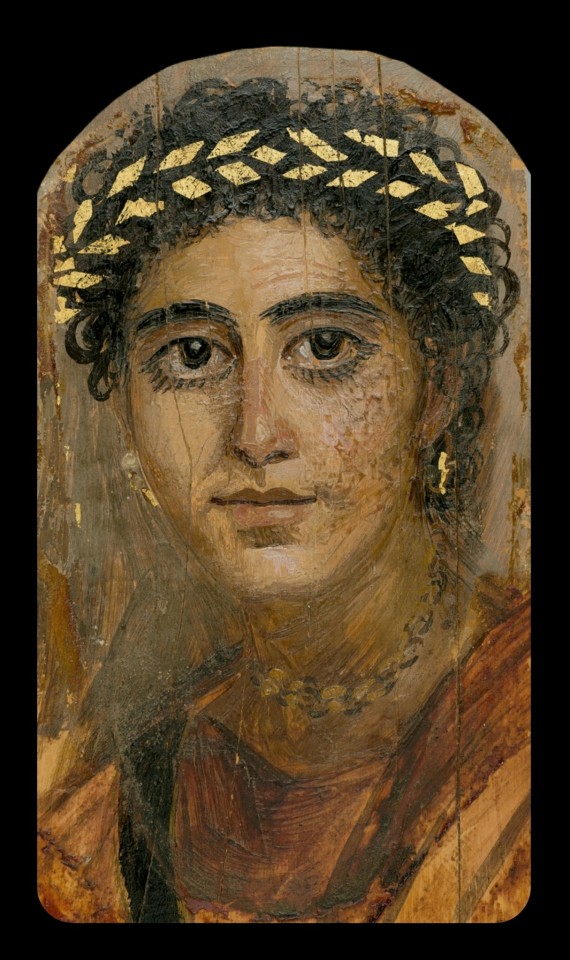
Above: portrait of a young woman in red, c.90-120 CE
Nearly 1,000 of these portraits are currently known to exist.
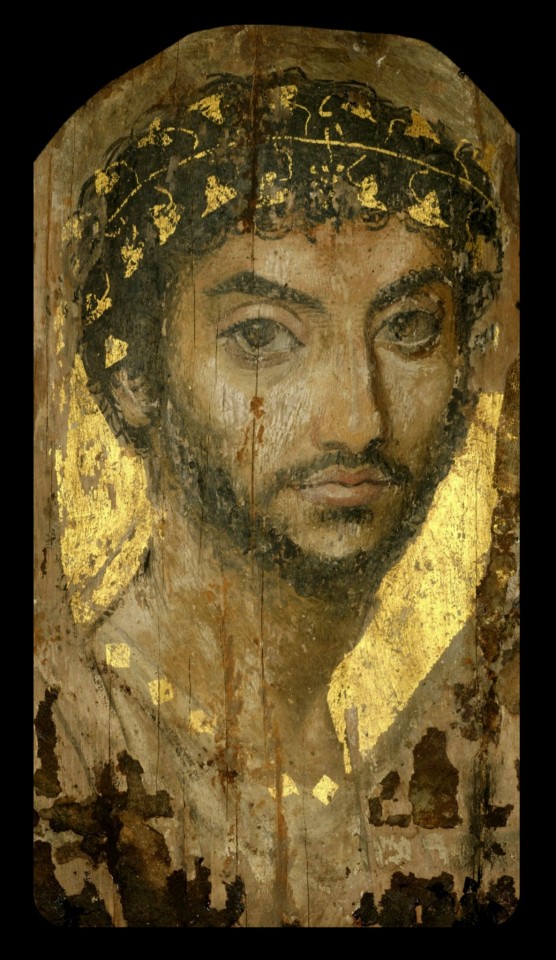
Above: portrait of a man wearing a gilded ivy wreath, c.100-150 CE
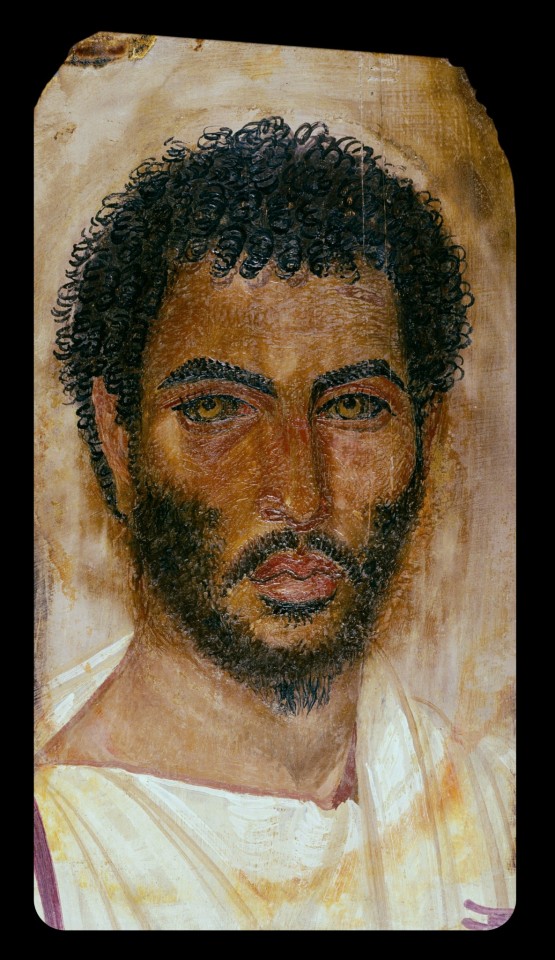
Above: portrait of a bearded man, c.150-170 CE
Sources & More Info:
Curationist: Fayum Portraits
Harvard Art Museums: Giving the Dead their Due: an Exhibition Re-Examines Funerary Portraits from Roman Egypt
Getty Museum: APPEAR Project
Getty Museum: Faces of Roman Egypt
National Geographic: Ancient Egypt's Stunning, Lifelike Mummy Portraits
The Athens Centre: The Myth of Whiteness in Classical Sculpture
Forbes: Whitewashing Ancient Statues: Whiteness, Racism and Color in the Ancient World
#archaeology#artifact#anthropology#history#ancient history#art#fayum portraits#roman egypt#ancient rome#ethnography#painting#portrait#north africa#people of color#egypt#religion#greco roman#greek#classical antiquity#fayum#mummy portraits#romano egyptian#representation
395 notes
·
View notes
Photo

This is another depiction of mine of the scholar Hypatia of Alexandria, who lived and studied in Roman Egypt during the fourth to early fifth centuries AD.
A teacher and scholar of Neo-Platonic philosophy who also built scientific instruments such as astrolabes and hydrometers, she became an adviser to the Roman prefect Orestes, whose conflict with the Christian bishop Cyril would ultimately drag her into the early Christian community’s crosshairs. Hypatia would face a brutal death in 415 AD at the hands of a Christian mob who had her stripped naked and assaulted with ostraka (possibly meaning either roof tiles or oyster shells), dragged through the streets of Alexandria, and set her remains on fire. Some historians have claimed Hypatia’s murder represents the “death of classical antiquity” at the hands of religious fanaticism, but it should be noted that the mob’s reason for targeting Hypatia had more to do with her alliance with Orestes, himself a Christian, than anything she had taught as a scholar and philosopher.
We do not know much about Hypatia’s background other than that she had a father named Theon, and her physical appearance remains unknown to the best of my knowledge. Although her name is of Greek origin, there are records of indigenous Egyptians, Jews, and other non-Hellenes in Egypt assuming Greek names during the Greco-Roman periods, so I believe it is possible that Hypatia was of Egyptian (or other African) descent rather than strictly Greek as commonly shown in artistic portrayals.
--- Brandon S. Pilcher, aka TyrannoNinja
117 notes
·
View notes
Text

Sphinx of Pharaoh Amenemhat III (Imn-m-ḥꜣt, “Amun is in the front,” 12th dynasty, ruled 1829-1799 BCE), who would become divinized and worshipped in the Fayyum lake region of Egypt well into the Greco-Roman period and known in Greek as Poimandres (Ποιμάνδρης), from Egyptian pr-ꜥꜣ (ni)-mꜣꜥt-rꜥ, “Pharaoh of the Ma’at of Ra,” which was his ruling throne name.
In the Fayyum there are statues of him standing together with the god Thoth (Greek Hermes) next to a larger statue of Sobek (Suchos), the primordial deity.
84 notes
·
View notes
Text

[Title]: Taglocks: How to Target a Person or Place
Related to Taglocks
Threshold Theory Binding Basics Introduction to Gnosis Energy Work Fundamentals Anchors Energetic Constructs Spell Logs Path of Least Resistance Blood Magic Spellcasting Basics
Introduction
A taglock stands as a fundamental element of spellcasting, bridging the material world with the energies, places, and people practitioners seek to influence. A taglock is, at its core, a tangible object that establishes a direct link to a specific target. This object serves as a conduit through which energy can be directed, manipulated, or harnessed in various spellwork and ritualistic practices.
The term "taglock" itself is derived from the concept of 'tagging' or marking something with a specific identifier, and 'lock,' which implies securing or anchoring a connection. Thus, a taglock effectively anchors the essence or energy of a person, place, or thing to the practitioner’s ritualistic focus. This tangible item could be something inherently connected to the target, such as a personal belonging or a biological sample, thereby ensuring that the magical workings are precise and targeted.
History
The use of objects to establish a connection with a person, place, or entity is a practice that can be traced back to ancient civilizations. The principles underlying taglocks are fundamentally tied to the broader concepts of sympathetic magic and animism, both of which have been integral to human spirituality and ritualistic practices for millennia.
Ancient Civilizations
Mesopotamia and Egypt: In ancient Mesopotamian and Egyptian cultures, magic was an integral part of daily life and religious practice. Objects such as amulets, talismans, and personal artifacts were often used to protect, heal, or curse individuals. These items were believed to carry the essence or influence of the person or deity they were associated with. For instance, in ancient Egypt, hair, nails, or pieces of clothing were sometimes used in magical rituals to exert influence over an individual, embodying the early concept of taglocks.
Greece and Rome: The Greco-Roman world also embraced the use of personal items in magic. The Greek Magical Papyri, a collection of ancient magical texts, includes numerous spells that call for the use of personal objects such as hair, nails, and garments. These items were believed to create a sympathetic link to the target, enabling the practitioner to influence them from a distance. This practice reflects the underlying principle of sympathetic magic, where "like affects like," a foundational concept for the use of taglocks.
Medieval and Renaissance Europe
Folk Magic and Witchcraft: In medieval Europe, the use of personal items in folk magic and witchcraft was widespread. Cunning folk, wise women, and witches often employed objects belonging to their clients or targets in their spells and rituals. These objects served as conduits for magical influence, much like modern taglocks. For example, poppets (dolls representing individuals) were frequently stuffed with hair, nails, or clothing scraps from the person they were intended to influence.
Grimoires and Magical Texts: The grimoires and magical texts of the Renaissance period also provide evidence of the use of personal items in magic. The "Key of Solomon," a well-known grimoire, includes instructions for using personal items in rituals to bind or influence others. The "Malleus Maleficarum," a notorious witch-hunting manual, documents the belief in and fear of witches using such items to cast spells.
Indigenous and Non-Western Cultures
African Diasporic Traditions: In various traditional religions and spiritual practices, the use of personal items for magical purposes is common. For example, in Vodou and Hoodoo, personal items such as hair, clothing, and personal effects are used in rituals and spellwork to create a link to the target. These items, often referred to as "personal concerns," function similarly to taglocks by establishing a direct connection between the practitioner and the individual they wish to influence.
Asian Traditions: In Asian cultures, particularly in traditional Chinese and Japanese practices, the use of personal items in magic and healing is also prevalent. In Chinese folk religion and Taoist magic, personal items are used in rituals to heal or protect individuals. Similarly, in Shinto practices in Japan, personal items can be used in purification and protective rituals.
Modern Revival and Adaptation
Contemporary Witchcraft: The modern revival of witchcraft, particularly since the mid-20th century, has seen a resurgence in the use of taglocks. Contemporary practitioners draw on historical and cross-cultural practices, adapting the use of personal items to fit modern magical frameworks. Books on witchcraft and magic frequently discuss the use of taglocks, emphasizing their importance in creating a tangible link to the target.
Neo-Pagan & Occultist Movements: Neo-Pagan movements, such as various forms of Wicca, have incorporated the concept of taglocks into their practices. These movements often emphasize the importance of personal connection and the use of physical objects to ground and direct magical energy. While these practices have evolved, they continue to reflect the ancient principles of sympathetic magic and the use of personal items to establish a magical connection.

How do Taglocks Work?
Energetic Connection and Sympathetic Magic
In the practice of traditional witchcraft, the efficacy of a taglock lies in its ability to establish a connection between the anchored spell and the target. This connection is primarily rooted in the principles of sympathetic magic, a foundational concept that posits that objects can influence one another through their inherent similarities or direct associations; as well as energetic entanglement, the process through which identical energetic compounds can interact without direct spatial contact.
Sympathetic magic operates on the premise that a taglock, due to its intimate connection with the target, acts as a proxy or representative. The energy directed towards the taglock is believed to transfer seamlessly to the target, facilitating the intended transformation or influence. This is often articulated through the maxim "like effects like," underscoring the principle that items connected by similarity or direct contact can impact each other even when physically separated.
The energetic link established through a taglock is akin to an invisible thread that connects the practitioner’s will to the target. This thread is not a physical entity but an energetic conduit through which influence flows. The strength and clarity of this connection depend on the nature of the taglock and the amount of genetic material it carries. For instance, a strand of hair or a piece of clothing with trace amounts of skin cells creates a more potent connection than a mere photograph or written name. This is due to the energetic compounds that are unique to each person’s genetic sequence and their higher probability to be energetically entangled. While a sympathetic connection works well in most situations, having an energetic connection is significantly more reliable.
Incorporating Taglocks into Spellwork
Anchoring is a necessary step in the utilization of taglocks, involving the establishment of a lasting connection between the taglock and the target within a spell. This process entails affixing the taglock firmly to the desired magical outcome, thereby ensuring that the energy directed through the taglock manifests effectively in the target’s life. Anchoring is not merely about physical attachment but the energetic binding of the taglock to the spell's energetic design.
To anchor a taglock, the practitioner must first select a taglock that has a strong and clear connection to the target. The effectiveness of anchoring is directly proportional to the relevance and potency of the chosen taglock. The next step involves ritually preparing the taglock. This can include cleansing the taglock to remove any extraneous energies, thereby ensuring that it is a pure conduit for the spell’s purpose. Common methods of cleansing include using elements like water, fire, or salt, each method tailored to the nature of the taglock and the spell.
Once cleansed, the practitioner imbues the taglock with the desired energy through a ritual. This may involve chanting, the use of symbols, or the invocation of natural forces to charge the taglock. The ritual acts as a ceremonial binding, infusing the taglock with the energy necessary to enact the spell’s purpose. During this process, the practitioner focuses intensely on the connection between the taglock and the target, reinforcing the energetic link.
Finally, the taglock is integrated into the spell structure. This can be achieved by pulling an energetic conduit from the taglock and into the spell’s anchor. This way, a solid circuit can be established. The key is to position the taglock in a manner that aligns with the natural flow of energy, ensuring that the spell’s influence is directed towards the target with minimal resistance. Just placing a taglock into a jar with other elements has a chance of establishing its own energetic connection, however it is not very likely.

Unbinding Taglocks
Energetic Dismantling
The most effective method of unbinding a taglock is energetic dismantling, which requires the careful and deliberate dismantling of the energetic connections that have been established during its use. Energetic dismantling is a method that involves consciously deconstructing the energic structures and pathways that link the taglock to its target. This process ensures that the influences exerted through the taglock are effectively neutralized, preventing any residual effects from lingering.
The practitioner utilizes their energetic awareness in order to visually and mentally map out the energetic connections emanating from the taglock. This step is crucial, as it allows for a clear understanding of how the energy has been structured and directed. Once these connections are identified, the practitioner then introduces energetic compounds that are of the opposite frequencies of the energetic connections. This will cause the energetic connections to cancel out and become inert.
After all the connections have been severed, the practitioner proceeds to cleanse the taglock to remove any residual energy. This can be done using elements such as water, salt, or incense, depending on the nature of the taglock and the preferences of the practitioner. The cleansing process ensures that the taglock is fully neutralized, rendering it inert and free from any remaining influence.
Anchor Destruction
Anchor destruction is a more direct and often physical approach to unbinding taglocks. This method involves the literal destruction of the taglock itself, effectively dismantling the anchor that connects it to the target. Anchor destruction is particularly effective when the taglock is a physical object that can be easily manipulated or disposed of.
The first step in anchor destruction is to identify the nature of the taglock and choose an appropriate method of destruction. For physical objects, this could involve burning, breaking, or burying the taglock. Each method carries its own symbolic significance and energetic impact. For instance, burning a taglock in a fire ritual symbolizes purification and transformation, reducing the object to ashes and dispersing its energy into the air. Breaking the taglock into pieces represents a forceful severing of the connection, while burying it in the earth signifies grounding and neutralization.
During the destruction, the practitioner may recite incantations or prayers to reinforce the unbinding process, so long as they do not cause the practitioner to break their state of gnosis. This could serve to solidify the practitioner's will and direct the energy towards severing the connection. As before, cleansing is also recommended afterwards.
Cord Cutting (Not candle divination)
Cord cutting is a technique used to sever the energetic cords or ties that bind the taglock to its target. These cords represent the strings of fate, or channels through which energy flows, maintaining the connection established by the taglock. Cord cutting is a powerful method for releasing these ties, allowing both the practitioner and the target to move forward unencumbered.
To perform a cord-cutting ritual, the practitioner begins by grounding and centering themselves, creating a stable foundation for the work ahead. The taglock is then placed before the practitioner, and a clear intention to sever the energetic cords is set. This intention is crucial, as it directs the focus and power of the ritual.
A common tool for cord cutting is a ritual knife or athame, though other tools such as scissors or even one’s hands can be used depending on the practitioner’s preference. The practitioner then uses their awareness to feel for the energetic cords extending from the taglock and uses the tool to cut through these cords. Each cut is made with deliberate precision.
During the process, the practitioner may also employ visualization techniques to enhance the effectiveness of the ritual. This could involve imagining the cords dissolving into light, evaporating like mist, or being absorbed back into the earth. These visualizations help to solidify the disconnection on both an energetic and psychological level so long as one is aware that visualization in and of itself is not a spell nor energy work.
After the cords have been cut, the practitioner performs a cleansing ritual to purify the space and themselves. This ensures that any residual energy from the cords is fully cleared away, preventing any unintended consequences or lingering attachments. The taglock, now devoid of its energetic ties, can be safely disposed of or repurposed as desired.
Cord cutting not only releases the target from the influence of the taglock but also frees the practitioner from the energetic investment in the spell. This liberation allows for a fresh start, unburdened by the previous connections, and opens the way for new magical endeavors.

Taglock Alternatives
Taglock alternatives are useful in situations where obtaining a physical item linked to the target is impractical or impossible, such as when working at a distance or in covert operations. Methods like visualizations, sigils, memories, elemental representations, and astrological correspondences may still establish a sympathetic link to the target. However, these alternatives often lack the direct energetic connection that taglocks provide, making them less efficient. The inherent uncertainty and reduced potency of these methods can lead to weaker or less reliable spell outcomes, requiring greater effort and near flawless spell design from the practitioner to achieve the desired effects.
Sigils and Symbols: Creating a unique symbol or sigil that represents the target can be a powerful tool. This symbol can be charged with energy and intent to direct the spell's effect.
Visualization Techniques: Instead of using a physical object, practitioners can employ detailed mental images of the target. This involves deeply focusing on the target’s attributes and characteristics during the spellcasting process.
Memories of an individual or location: Using specific memories that encapsulate the essence or identity of the target can serve as a focal point. Repeatedly recalling or chanting the target’s name or a descriptive phrase can help direct the spell.
Elemental Representations: Associating the target with a particular element (earth, air, fire, water) and using that element in the spell can establish a connection. For example, water could be used to represent a person with a flowing, adaptable nature.
Astrological Correspondences: Using the astrological sign, planetary influence, or birth chart of the target can provide a non-physical link. Aligning the spell with specific astrological times or planetary hours that correspond to the target can enhance the connection.

Patreon shoutouts
Thank you for your continued support! My patrons help me maintain the drive to create content and help me keep food in my pantry. My patrons of Mystic tier and higher had access to this article a week before it was public! To see other perks of supporting me, click here!
Thank you for your continued support:
Megan Kipp!
Cosmicaquamarie
Maxim
To learn more about me or view my Masterpost, click here.
This post was reviewed and edited for easier reading by ChatGPT.
#taglock#traditional witchcraft#secular witchcraft#eclectic witchcraft#energy work#beginner witch#baby witch#witchcraft resources#witchcraft guide#informational post#Gspell
58 notes
·
View notes
Text
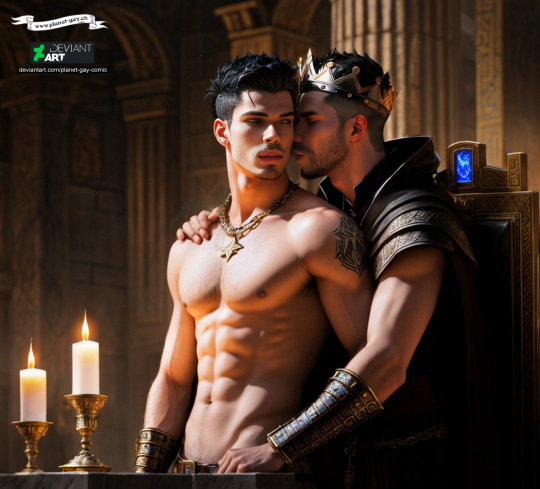
Homosexuality in History: Kings and Their Lovers
Hadrian and Antinous Hadrian and Antinous are famous historical figures who epitomize one of the most well-known homosexual relationships in history. Hadrian, the Roman Emperor from 117 to 138 AD, developed a close friendship with Antinous, a young man from Egypt. This relationship was characterized by deep affection and is often viewed as romantic. There are indications of an erotic component, evident in Hadrian's inconsolable reaction to Antinous's tragic death. Hadrian erected monuments and temples in honor of Antinous, underscoring their special bond.
Alexander the Great and Hephaestion The ancient world was a time when homosexuality was not as taboo in many cultures as it is today. Alexander the Great and Hephaestion are a prominent example of this. Alexander, the Macedonian king from 336 to 323 BC, and Hephaestion were best friends and closest confidants. Their relationship was so close that rumors of a romantic or even erotic connection circulated. After Hephaestion's death, Alexander held a public funeral, indicating their deep emotional bond.
Edward II and Piers Gaveston During the Middle Ages, homosexuality was not as accepted in many cultures as it is today. The relationship between Edward II and Piers Gaveston was marked by rumors and hostilities, demonstrating that homosexuality was not always accepted in the past. Their relationship is believed to have been of a romantic nature, leading to political turmoil and controversies. Gaveston was even appointed Earl of Cornwall by Edward, highlighting their special connection.
Matthias Corvinus and Bálint Balassi In the Renaissance, there was a revival of Greco-Roman culture, leading to increased tolerance of homosexuality. Matthias Corvinus ruled at a time when homosexuality was no longer illegal in Hungary. The relationship between Matthias Corvinus and Bálint Balassi is another example of homosexuality being accepted during this period. Matthias Corvinus had a public relationship with Bálint Balassi, a poet and soldier. Their relationship may have been of a romantic nature, as Balassi was appointed as the court poet, and it had cultural influence.
These relationships between the mentioned kings and their lovers are remarkable examples of the long history of homosexuality in the world. In many cultures of antiquity and the Middle Ages, homosexuality was not as strongly stigmatized, demonstrating that homosexuality was not always rejected in the past.
Text supported by Bard and Chat-GPT 3.5 These images were generated with StableDiffusion v1.5. Faces and background overworked with composing and inpainting.
#gayart#digitalart#medievalart#queer#lgbt#history#gayhistory#KingsLovers#manlovesman#powerandpassion#gaylove
240 notes
·
View notes
Text


Shirdal 'Lion-Eagle' Talon Abraxas
Ancient origins of the griffin
A legendary creature with the body, tail, and back legs of a lion, the head and wings of an eagle, and, sometimes, an eagle's talons as its front feet first appears in ancient Iranian and Egyptian art dating back to before 3000 BCE. In Egypt, a griffin-like animal can be seen on a cosmetic palette from Hierakonpolis, known as the "Two Dog Palette", dated to 3300–3100 BCE. The divine storm-bird, Anzu, half man and half bird, associated with the chief sky god Enlil was revered by the ancient Sumerians and Akkadians. The Lamassu, a similar hybrid deity depicted with the body of a bull or lion, eagle's wings, and a human head, was a common guardian figure in Assyrian palaces.
In Iranian mythology, the griffin is called Shirdal, which means "Lion-Eagle." Shirdals appeared on cylinder seals from Susa as early as 3000 BCE. Shirdals also are common motifs in the art of Luristan, the North and North West region of Iran in the Iron Age, and Achaemenid art. The 15th century BCE frescoes in the Throne Room of the Bronze Age Palace of Knossos are among the earliest depictions of the mythical creatures in ancient Greek art. In Central Asia, the griffin image was later included in Scythian "animal style" artifacts of the 6th–4th centuries BCE.
In his Histories, Herodotus relates travelers' reports of a land in the northeast where griffins guard gold and where the North Wind issues from a mountain cave. Scholars have speculated that this location may be referring to the Dzungarian Gate, a mountain pass between China and Central Asia. Some modern scholars including Adrienne Mayor have theorized that the legend of the griffin was derived from numerous fossilized remains of Protoceratops found in conjunction with gold mining in the mountains of Scythia, present day eastern Kazakhstan. Recent linguistic and archaeological studies confirm that Greek and Roman trade with Saka-Scythian nomads flourished in that region from the 7th century BCE, when the semi-legendary Greek poet Aristeas wrote of his travels in the far north, to about 300 CE when Aelian reported details about the griffin - exactly the period during which griffins were most prominently featured in Greco-Roman art and literature. Mayor argues that over-repeated retelling and drawing or recopying its bony neck frill (which is rather fragile and may have been frequently broken or entirely weathered away) may have been thought to be large mammal-type external ears, and its beak treated as evidence of a part-bird nature that lead to bird-type wings being added. Others argue fragments of the neck frill may have been mistook for remnants of wings.
Lucius Flavius Philostratus (170 – 247/250 CE), a Greek sophist who lived during the reign of the Roman emperor Philip the Arab, in his "Life of Apollonius of Tyana" also writes about griffins that quarried gold because of the strength of their beak. He describes them as having the strength to overcome lions, elephants, and even dragons, although he notes they had no great power of flying long distances because their wings were not attached the same way as birds. He also described their feet webbed with red membranes. Philostratus says the creatures were found in India and venerated there as sacred to the sun. He observed that griffins were often drawn by Indian artists as yoked four abreast to represent the sun.
25 notes
·
View notes
Text






Favorite History Books || Assyria: The Rise and Fall of the World’s First Empire by Eckart Frahm ★★★★☆
… This birth of Assyria in the proper sense of the term— its emergence as a land that included great cities such as Nineveh, Calah, and Arbela, and soon others much farther away— marked the beginning of a new era: the Middle Assyrian period. Now a full-fledged monarchy, Assyrians started to see their land as a peer of the most powerful states of the time, from Babylonia in the south to Egypt in the west. During the eleventh century BCE, the Assyrian kingdom experienced a new crisis, this one caused by climate change, migrations, and internal tensions. It lost most of its provinces, especially in the west. But when the dust settled, it managed to rise from the ashes faster than any of the other states in the region. A number of energetic and ruthless Assyrian rulers of the Neo-Assyrian period (ca. 934– 612 BCE) took advantage of the weakness of their political rivals, embarking on a systematic campaign of subjugation, destruction, and annexation. Their efforts, initially aimed at the reconquest of areas that had been under Assyrian rule before and then moving farther afield, were carried out with unsparing and often violent determination, cruelly epitomized in an aphoristic statement found in another of Esarhaddon’s inscriptions: “Before me, cities, behind me, ruins.” . . . During the last years of Esarhaddon’s reign, Assyria ruled over a territory that reached from northeastern Africa and the Eastern Mediterranean to Western Iran, and from Anatolia in the north to the Persian Gulf in the south. Parks with exotic plants lined Assyrian palaces, newly created universal libraries were the pride of Assyrian kings, and an ethnically diverse mix of people from dozens of foreign lands moved about the streets of Assyrian cities such as Nineveh and Calah. Yet it was not to last. Only half a century after Esarhaddon’s reign, the Assyrian state suffered a dramatic collapse, culminating in the conquest and destruction of Nineveh in 612 BCE. Assyria’s fall occurred long before some better- known empires of the ancient world were founded: the Persian Empire, established in 539 BCE by Cyrus II; Alexander the Great’s fourth-century BCE Greco-Asian Empire and its successor states; the third-century BCE empires created by the Indian ruler, Ashoka and the Chinese empero, Qin Shi Huang; and the most prominent and influential of these, the Roman Empire, whose beginnings lay in the first century BCE. The Assyrian kingdom may not have the same name recognition. But for more than one hundred years, from about 730 to 620 BCE, it had been a political body so large and so powerful that it can rightly be called the world’s first empire. And so Assyria matters. “World history” does not begin with the Greeks or the Romans— it begins with Assyria. “World religion” took off in Assyria’s imperial periphery. Assyria’s fall was the result of a first “world war.” And the bureaucracies, communication networks, and modes of domination created by the Assyrian elites more than 2,700 years ago served as blueprints for many of the political institutions of subsequent great powers, first directly and then indirectly, up until the present day. This book tells the story of the slow rise and glory days of this remarkable ancient civilization, of its dramatic fall, and its intriguing afterlife.
#historyedit#assyrians#neo assyrian empire#asian history#iraqi history#history#history books#nanshe's graphics
20 notes
·
View notes
Text
Why Marvel spelled it "Khonshu"
First of all, there is not one correct spelling of this name as Egyptian hieroglyphics cannot be directly translated into the alphabet, and the pronunciation and spelling of the name have changed over the millennia.
To understand where this spelling comes from, one must first look at the history of the name: The spelling in the Old and Middle Kingdoms suggests that the name was pronounced something like χansVw. The V stands for a short unknown vowel that could not be recreated because ancient Egyptian script has no vowels. That's why direct transcriptions of hieroglyphics just write the name as "hnsw". The spellings Khonsu, Chensu, Chonsu, Khonsou, Chonsou, Khesnu, and Khensou are all derived from hnsw/χansVw, .
However, "Khonsu" is not the "authenthic" pronunciation of the name, because a) the English Khonsu is pronounced xɛnsu and not χansVw, and b) the original name for Khonsu contains the unknown vowel. It is even quite possible that Egyptians of the Old Kingdom used a different vowel for the name than the ones of the Middle Kingdom. In the Amarna period, the name was pronounced ˈχansə, and around 800 BCA, it was χans. Interestingly, the pronunciation ˈχansə seems to have survived in the Meroitic language in words like uṣiḫaanša. From χans, the spellings Chons, Khens, Khons, Hons, etc., are derived. In Coptic, χans became Ϣⲟⲛⲥ, from which the spellings Shons and Schons are derived. Additionally, there is a Hellenized version of the name: Chespisichis/Khespisíkhis, from which, for example, the Portuguese name for Khonsu, Quespisiquis, is derived. The Greek version did not become the dominant form however, unlike for other gods such as Osiris, Isis, Seth, Nephthys, Horus and Anubis (Ausar, Aset, Sutekh Nebet-het, Heru and Anpu are the actual Egyptian versions of their names)
For reasons that will be important later, I first need to explain Khonsus role in the Theban pantheon. Every ancient Egyptian city had its own hierarchy and local versions of gods and myths. Different attributes and tasks were assigned to different gods in different citys. Amun, Khonsu, and Mut were the patron gods of Thebes, though they were relatively unknown until Thebes became the capital city of Egypt. This led to the cults of these gods becoming extremely popular. It is hard to comprehend just how incredibly powerful the priesthood of Amun was.: the priests of Amun were rulers in their own rights during the 21st Dynasty, and in the Greco-Roman period people used the Temple of Khonsu in Karnak to make temple oaths that governed civil matters like debts, compensations, inheritance, and divorce. Thus, the priesthoods in Karnak held significant power within Ancient Egyptian society.
I believe Marvel had difficulty understanding that Egyptian mythology did not have THE ONE pantheon that stood above the rest of the gods, like the 12 Olympians or the gods of Asgard. The Ennead of Heliopolis, was very important in the city of Heliopolis as it had two primary functions: 1) It served as a divine council for resolving disputes among the gods, and 2) as a generation of creation gods. Cosmogonies (creation myths) were different in every city, with each city placing its local gods at the top of the creation chain. In Thebes, the Ennead also existed, but it played a significantly smaller role in the Theban pantheon since they were not considered to be the gods who actually created the world. Additionally, it partially consisted of different gods than the "classic" Ennead. Thus, the Theban Ennead primarily served as the court and council of the god-king Amun-Ra. While Osiris and Horus were still considered to be quite important compared to the rest of the Ennead, they were very much merged with the Theban versions of Amun and Khonsu. Tasks that were typically attributed to Isis in other cities, for example, were assigned to "Hathor chief of Thebes" (a local Theban version of Hathor, not to be confused with "Hathor within the Benenet": another local Theban version of Hathor who was revered as the consort of Khonsu-Neferhotep).
There are several Theban cosmogonies, but they generally follow this pattern: At the beginning, there was a creator god who was a form of Amun. This creator god had a son(s) who were sometimes deities like Khonsu and Tatennen, but also could be other aspects of Amun (for example, in some inscriptions, the creator god Amun Kematef creates his "son" Amun Irita, but Amun Irita is just another version of Amun. This differentiation is sometimes made in Theban inscriptions to distinguish Amun as the dead creator god from Amun the king of the gods and Amun as part of the Ogdoad). The creator god then creates the eight gods of the Ogdoad with this son. The ogdoad is a group of four male-female twin pairs that in other cities is the very first generation of gods. The Ogdoad then together creates some form of the sun god, who then creates the Ennead.
The new Kingdom period made Khonsu into A creator god and sometimes even THE creator god The depiction of Khonsu as THE creator god is much rarer and is due to a fusion with Amun-Ra. He was known as “Khonsu, the great one, who comes forth from the primordial water” (as seen on the statue of Harwa from the Twenty-Sixth Dynasty in the Egyptian Museum, the magical healing statue of Hor in the Turin Museum from the Thirtieth Dynasty, the healing statue of a priest of the goddess Bastet in the Louvre Museum from the Thirtieth Dynasty, the healing statue of Psammetikseneb in the Florence Museum from the Thirtieth Dynasty, and in the inscription of Mentuemhat in the temple of the goddess Mut at Karnak from the end of the Twenty-Fifth Dynasty and the beginning of the Twenty-Sixth Dynasty respectively). In his form as the creator god who emerged from the primordial water, he was sometimes represented as a double hawk-headed man with four wings standing on two crocodiles as a symbol of his triumph over chaos. Alternatively, he was rarely represented as a creator god in the form of a crocodile with the head of a hawk, lying on a pedestal. According to the historian Armour, the two heads of the hawk represent the sun and moon. They also probably symbolize Khonsu as a divine lunar equivalent of the creator sun god. In this form, he combines the sun and the moon in a single creature, thus, he could be conceived as a mythical complex personification of death and rebirth simultaneously.
Khonsu-Re was known since the late New Kingdom, but he lost significance during the Greco-Roman period. We often imagine the triad consisting of Amun, Mut, and Khonsu as a father, mother, and child dynamik, but like everything in Egyptian Mythology, the family tree is more of a cycle: Mut could be the mother, daughter, and wife of Amun(-Ra), Amun was the father of Khonsu, but at the same time, Khonsu was also seen as a form that Amun takes at night or at the beginning of the new day, and Mut was the mother of Khonsu, but she was occasionally also referred to as his daughter. ("Khonsu who arrives as an infant after old age, made by his daughter, fashioned by his J-serpent, through her [Mut], he is greatest of gods and goddesses. That she gave birth to him in Thebes was in the form of an august child, the rn/i-scarab, in his manifestation of Khepri"). The reason for this is that the births of the sun and moon were not understood as one-time events but as events that repeated every day, month, or year (daily birth of the moon symbolizing the rising of the moon, monthly births symbolized the beginning of a new moon cycle, and yearly birth symbolized the beginning of a new year and the start of spring). As the sun and moon, Amun and Khonsu are children who grow old, die, and are then reborn in an ever-renewing cycle.
Khonsu as A creator god is the more commonly attributed role to him in Thebes and is more associated with his role as the son of Amun rather than as a moon and sun god. The khonsu cosmogony makes him into the second god to emerge from the primodial water after Amun-Ra Kematef. Basically Amun ejaculates the into the waters, Khonsu then swallows the seed, becomes pregnant by it and travels to earth to give birth to the Ogdoad on the so called island of flames. In a way all gods can be considered the sons of Amun(-Ra) but Khonsu fills the role of THE son of Amun: the firstborn, the heir, the most important, and the most revered. This position naturally aligns him with Shu, who in the Heliopolitan cosmogony is the firstborn son of Re. In fact, Khonsu adopts many aspects of Shu: like how he is regarded as a wind god and the holder of the sky. Early Egyptologists even thought that Shu and Khonsu were the same deity. I still have an annotated version of Herodotus' work from the 18th century, where the footnotes claim that Shu in Thebes was called "Khonsu Neferhotep." The confusion arose from some Ancient Egyptian inscriptions that used "Shu" as an epithet after the Khonsus name, which literally gives the name Khons-shu or Khonshu (as I have already explained, Khons/Chons was the spelling usally used during the late New Kingdom). But the Shu in Khonshu was not just an epithet but this merged form also had its own cult.
God splitting happens when an epithet becomes so interwoven with a particular epithet that it forms its own subaspect of the "main" deity. Like how "Hathor in Benenet", "Hathor, chief of Thebes" and "Hathor, chief of Dendra" are all aspects of Hathor with the epitheth stating which role they take on in the pantheon. Distinguishing between different forms of the same god can be quite important since there can be significant differences when it comes to their priesthood, temple attributes and their place in the Egyptian family tree. God splitting was very common fo Khonsu in Thebes: "Khonsu-Neferhotep," "Khonsu-pa-ir-sekher," "Khonsu-pa-chered," "Khonsu-wen-nekhu," "Khonsu-Shu," and "Khonsu-Thoth" all had their own small priesthoods in the Karnak Temple Complex. The priesthood of Khonshu did not have its own temple, unlike "Khonsu-pa-chered" or "Khonsu-pa-ir-sekher," but was housed in the main temple of Khonsu in Thebes, the so-called Benenet.
Essentially, all offshoots of Khonsu are differnet aspects for Khonsu-Neferhotep, who had by far the largest and most important priesthood. And Khonsu-Neferhotep is the aspect of Khonsu that gained the most importance. Therefore Khonshu is a part of Khonsu-Neferhotep and Khonsu-Neferhotep is a part of Khonsu. That is why Khonsu during the Old Kingdom was so different from the Khonsu of the New Kingdom period: The theban version of him eclipsed basically all of the bloodthirsty, cannibal versions of him that might have existed in other city during the Middle Kingdom Other Khonsus in other cities. That is essentially why it is so difficult to understand Khonsus's original role in the Old and Milde kingdoms aside from the bloodthirsty underworld deity. It even debatable to which extent the Khonsu in the pyramid texts and coffin texts was a moon god to begin with and when he first became associated with the falcon. It is difficult to say who Khonsu was before became Khonsu-Neferhotep, the patron god of Thebes. Therefore it might be more accurate to say that Khonsu-Neferhotep isn't just a partial aspect of Khonsu, he straight up became THE Khonsu. We do not even know what the cult of Theban Khonsu was like before Ramesses III built the Benenet and Hatshepsut grouped him together with Amun and Mut to triad, because nothing of the Pre-Benenet temple survived, just the knowledge that there existed one.
In any case, Khonshu primarily embodied Khonsu's aspect as a sun and creator god, which is why I have focused so much on these aspects. Therefore, he is referred to in inscriptions in various ways, such as: "He who sails to Western Thebes daily, who leaves offerings for the Great Ba of Kematef, who is there as Amun, in the Underworld chamber with the Bas of the Ogdoad." or "He who enters Manu bearing offerings for the Father of fathers of the Ogdoad, so that his face lights up and his heart rejoices upon seeing him, as the august child when he enters the Eye-of-Re (Thebes)." Or "He who returns pregnant from the Grotto of Nun with the prestige of his father in his body." Basically some priests of Khonsu-Neferhotep thought that the myth in which Khonsu becomes pregnant by drinking his fathers semen, and then fucks the universe into existence with Hathor is a linguistic masterpiece that deserved its own cult.
Presumably, the cult around Khonshu had something to do with ancestor worship, as it describes how Khonshu leaves offerings for Amun Kematef and the Ogdoad. In the Theban tradition, the first creator god and the Ogdoad are often described as being dead gods, which contrasts sharply with the idea that Amun should be the king of the gods. This is why there is a differentiation between Amun Kematef, the dead first creator god, and Amun Irita, the living creator god and king of the gods. Simultaneously, the epithet "Father of the Fathers of the Ogdoad" is used to distinguish Kematef and Irita from Amun of the Ogdoad. Some cosmogonies, like the Khonsu cosmogony, avoid this confusion altogether by simply replacing the last pair of the Ogdoad (Amun and Amunet) with the twin pair Nia and Niat. Technically, there is also a fourth generation of Amun, because the sun god that the Ogdoad collectively conceives (don't ask me how they managed that. The gene pool of the Ancient Egyptian Gods is just a puddle at this point) is often another aspect of Amun, like Amenope.
#egyptian gods#egyptian mythology#khonsu#khonshu#moon knight#what happened in the primordial waters stays in the primordial waters
25 notes
·
View notes
Text

33 Greco-Roman Family Tombs Found in Aswan, Egypt
An Egyptian-Italian archaeological mission has uncovered 33 family tombs from the Greco-Roman period near the Aga Khan Mausoleum in Aswan, Egypt.
The joint mission, led by Dr. Mohamed Ismail Khaled, Secretary-General of the Supreme Council of Antiquities, and Professor Patrizia Piacentini from the University of Milan, made the announcement earlier this month. The tombs, discovered west of Aswan’s Nile, date back to the Late Period and the Greco-Roman era, spanning from the sixth century BCE to the third century CE.
The Aga Khan Mausoleum, the resting place of Aga Khan III, Sir Sultan Muhammed Shah, who passed away in 1957, now sits above a necropolis with over 400 tombs. Dr. Khaled noted that it adds a new historical dimension to the Aga Khan area. The tombs vary in architectural style, with some featuring arched entrances and open courtyards made from mudbrick, while others are directly carved into the mountain rock. This diversity reflects the social stratification of the period.
Among the notable finds are mummified remains and funerary objects, including clay figures, sacrificial tables, ceramics, and painted cartonnages. An intriguing discovery within a stone coffin revealed the mummified remains of an adult and a child, likely adhered together by embalming fluids. Further analysis is planned to understand their relationship.



Anthropological and radiological studies have provided insights into the health conditions of buried individuals. Dr. Patricia Piachenti from the University of Milan noted that 30% to 40% of the deceased were infants, children, or adolescents. This high mortality rate among the young offers clues about prevalent diseases during that period. The remains of several adult women showed signs of pelvic bone trauma, suggesting childbirth complications or other medical conditions. Other mummies exhibited evidence of anemia, malnutrition, chest diseases, tuberculosis, and osteoporosis.
“Initial studies reveal that many individuals suffered from infectious diseases and bone disorders,” said Dr. Piacentini. “Some adult females showed signs of medical interventions such as amputations and bone trauma, indicating that ancient Aswan had developed some medical practices.”
Dr. Ayman Ashmawy, Head of the Egyptian Antiquities Sector, said that the lower parts of the necropolis were likely reserved for the middle-class residents of Aswan Island, including physicians, artisans, merchants, and storekeepers. The upper parts of the necropolis, however, appear to have been reserved for the wealthier upper class. This social stratification is reflected in the differing architectural styles and the types of artifacts found within the tombs.



The discoveries also include remains of colored cartonnage, clay and stone figurines, wooden coffins, and offering tables. The tombs’ architectural complexity reflects the advanced skills of the ancient craftsmen who overcame the challenges of digging into rock and constructing low-ceilinged funerary rooms and galleries.
The mission has employed the latest technology, including X-ray and CT scans, to analyze the mummies and artifacts. These technologies have allowed researchers to create three-dimensional reconstructions of the mummies and identify items such as bracelets found on some individuals.
By Dario Radley.



#33 Greco-Roman Family Tombs Found in Aswan Egypt#Aga Khan Mausoleum#Late Period#Greco-Roman era#ancient grave#ancient tomb#ancient mausoleum#ancient artifacts#archeology#archeolgst#history#history news#ancient history#ancient culture#ancient civilizations
41 notes
·
View notes
Text
adventures in christian opinions about judaism
(reposted from Twitter)
So a while back I started writing a thing on the trio of parables that ends with the prodigal son (which I still need to finish) and like MAN OH MAN do Christian commentators insist that Jews hate shepherds.
Like, I can't even count the number of commentaries that insist that shepherds were "despised figures" for first-century Jews and the parables of the lost sheep and lost coin were designed to insult the Pharisees by comparing them first to a shepherd and then to a woman.
So, as is my wont whenever Christian commentators make a claim about what was normal for first-century Judaism, I decided to try to hunt down their source on this.
As I've said many times, when it comes to Christian parable interpreters' claims about what attitudes/beliefs/etc. were normal for first-century Jews, get used to the phrase "no sources are cited."
I mean, first off, as a 21st-century Jew, the insistence that 1st-century Jews hated shepherds rings odd, given that <checks notes> Abraham, Isaac, Jacob, Rachel, all of Jacob's kids (the founders of the tribes), David, etc. were all sheep-tenders. The image of God as a shepherd is pretty consistent throughout the Tanakh. That image reappears in the Qumran texts, which as far as I know, are one of the few Jewish sources we have from 1st-century Judaea.
The term "despised" gets used a lot, so I decided to dig into that one.




When I was able to find citations, I traced them back to an 1882 commentary by a guy named Frederic Farrar.
Farrar cites Heinrich Meyer as a source for this, but when I looked up THAT citation, it's Meyer saying that shepherds were a "lowly but patriarchally consecrated class" -- in other words, poor, but with a distinguished history and status.
So that's why everyone's tossing the term "despised" around--because Farrar just made it up. But what about primary sources? I went back on the hunt.
Surprisingly, in a number of reference works, like glossaries and Jeffers's "Greco-Roman World of the New Testament," I found similar assertions about the common attitude toward shepherds, for which they cited...
<drum roll>
Aristotle. You know, the Greek guy who lived 300 years before Jesus? Definitely a reliable source for Jewish attitudes of the time.
Some people cited Philo's On Agriculture. Okay, Philo was at least Jewish and lived when Jesus would have, although he was a wealthy Hellenized Jew living in Alexandria rather than a Pharisee living in the Galilee. But okay, at least it's the right culture and time period. (The reference in Philo turns out to be talking about the section of Genesis in which Joseph's brothers come visit him in Egypt. It talks about how they were proud to be shepherds, and criticizes (gentile) kings who look down on shepherds.)
Then we've got Mishnah Kiddushin, in which a bunch of rabbis are having a debate about which professions make you trustworthy vs untrustworthy, and one rabbi lists everyone from camel-drivers to herders to barbers to shopkeepers as untrustworthy. Another rabbi comes back and is like, nah, all those people are fine upstanding folks; it's doctors and butchers you've gotta watch out for. So they're citing one cranky dude with a LONG list of people he doesn't like, who immediately gets shot down, as evidence of the normative attitude for Jews about a century earlier.
Oh, and we've got a citation of Midrash Tehillim which says that God-as-shepherd doesn't have any of the failings of humans-as-shepherds, which... sure. Also, it was codified in the 1300s?
The most compelling citation is from the Talmud (Sanhedrin 25b), in which the rabbis discuss who's qualified to be a legal witness. They exclude shepherds, because shepherds graze their animals on other people's land, which some of the rabbis see as a type of theft.
The Talmud is a record of debates, but this passage definitely makes it sound like this is a majority opinion. (It should be noted that the passage disqualifies all KINDS of people, from those who lend with interest to those who fly pigeons, as having conflicts of interest.)
But the important thing here is that the Talmud includes records of debates from as late as the 4th or 5th centuries CE (300-400 years after Jesus's time), and the passage makes a point of noting that the disqualification of shepherds as witnesses is a later development.
So in other words, the idea that the Pharisees hated shepherds and would have been insulted by Jesus telling a story in which the protagonist was a shepherd is based either on Greek attitudes that are 300 years too early or Jewish ones that are 300-400 years too late.
But people will twist themselves into citation knots (or just not bother citing a source at all) to insist that this was a common attitude so they can position the Pharisees as hating those charming humble shepherds and their fuzzy little lambs.
As to WHY this idea seems to be so important to them, well, you cannot read about Luke 15 without encountering the word "outcast" roughly 90 times per page.
The framing is Jesus was friend to The Outcasts while the Pharisees despised The Outcasts and the Lost Sheep, Coin, and Sons are all parables about accepting The Outcast.
Never mind that neither the sheep, the coin, nor either of the sons got kicked out of their communities. The sheep wandered off, as sheep are wont to do, the coin was lost by its owner, and the younger son decided to leave to go on a spending spree while the older son declined to attend the welcome back party for him after his dad managed to hire a band and caterers but never thought to let his own son know what was going on and he had to find out from a hired hand.
Moreover, the term "outcasts" gets used as a synonym for "tax collectors and sinners." Tax collectors were usually pretty well-off because they ran a protection racket for the Romans. Outcasts? I mean, I guess? But hardly in the "marginalized and powerless" sense.
As far as "sinners," the NT doesn't usually bother telling us what, exactly, they did to "sin," but on the rare occasions when it does offer that context, it's almost always wealthy people.
But why talk about that when they can present the objection the Pharisees had to Jesus's dining with "tax collectors and sinners" as the Pharisees despising lowly outcasts, and insist that the Pharisees hated the idea of such people repenting and returning, and so Jesus was tweaking their noses by comparing them to shepherds and women.
As if, you know, teshuvah wasn't something the Pharisees were ALL ABOUT. If you want to actually understand, consider that the iconic tax collector in the parable of the Pharisee and the tax collector shows no inclination to STOP being a tax collector.
The objection wasn't you're having a friendly dinner with poor lowly outcasts for whom we have contempt. It was you're having a friendly dinner with people who are extorting their neighbors on behalf of the invaders who kill us for looking at them funny and have expressed no intention to stop doing that.
Now, there's a good discussion to be had about whether shunning Trump lawyers and Marjorie Taylor-Greene donors or inviting them to dinner and trying to win them over with compassion is more effective, more ethical, more compassionate (to whom?), etc.
But presumably we can see why people of intelligence and goodwill might disagree on which of those approaches is the right thing to do, and why such people might might object to the strategy they don't agree with.
But what really gets me is that Christians have the utter fucking NERVE to paint the Pharisees as inhumanly awful for not wanting to have dinner with tax collectors while viewing Corinthians as Holy Writ:

I mean, Paul's all YOU MUST SHUN ALCOHOLICS AND PEOPLE WHO ARE GREEDY and Christians are like yes, that makes sense, but if the Pharisees are like, no, I don't want to have dinner with that guy who narced on my cousin and got him crucified, Christians are like, they're monsters.
Cool, cool.
Anyway, this has been your weekly edition of Christians Need To Stop Just Making Shit Up About Jews And Then Citing Each Other Like It's Fact.
And there were a lot of "I've never heard anyone say Jews of Jesus's time hated shepherds..." responses: Maybe you haven't, but that doesn't make it uncommon.
Sources in which I've found it:
Craig Blomberg (Denver Seminary, Society of Biblical Literature, Tyndale House, NIV translation committee)
Jared Wilson (professor at multiple Baptist seminaries)
Stephen Wright (Spurgeon College (British evangelical college))
Arland Hultgren (Luther Seminary (ELCA))
Kenneth Bailey (Presbyterian/Episcopalian)
Joachim Jeremias (Lutheran, cited EVERYWHERE)
Bernard Brandon Scott (Disciples of Christ, the Jesus Seminar)
Klyne Snodgrass (Evangelical Covenant Church)
Barbara Reid (Catholic Biblical Association)
That particular trope spans denominations, decades, etc. It's not a fringe viewpoint.
#christian exegesis#antisemitism#jumblr#citational politics#bad methodology#parables#pharisees#first century judaism#second temple judaism#good shepherd#prodigal son#why are christians like this?
370 notes
·
View notes
Text
The Ancient Gods of Egypt

Step into the captivating world of ancient Egypt, where colossal pyramids, majestic pharaohs, and mystical gods have fascinated humanity for centuries. The pantheon of Egyptian deities weaves a rich tapestry of stories and powers. Let's delve into a few of the most prominent figures:
Osiris: The god of the underworld, Osiris embodies the themes of death, resurrection, and the Nile floods that sustained Egypt's fertile lands. His myth is a gripping tale of betrayal, dismemberment, and the unwavering efforts of his wife, Isis, to bring him back to life.
Isis: Revered as a devoted wife and mother, Isis played a pivotal role in Osiris's resurrection and cared for the deceased in the underworld. Her influence extended far beyond Egypt, reaching as far as Great Britain and Afghanistan during the Greco-Roman period.
Horus: The falcon-headed god, Horus, symbolized kingship, protection, and divine justice. His "Eye of Horus" represented healing and restoration, making him a figure of immense significance.
Ra: The sun god Ra, with his hawk head, was a central and compelling figure in Egyptian mythology. He sailed across the sky in his solar boat, bringing light and life to the world.
Anubis: The jackal-headed Anubis oversaw mummification and guided souls to the afterlife, crucial in ensuring a safe passage for the departed.
The Sphinx: Guardian of Secrets
Now, let's shift our focus to the Sphinx, the enigmatic creature standing sentinel near the pyramids of Giza. The Great Sphinx, with its lion body and human face, has captivated scholars and adventurers for generations. But did you know that similar sphinxes existed beyond Egypt?
Egyptian Sphinx: The iconic Egyptian Sphinx, carved from limestone, embodies mystery and wisdom. It gazes eastward, possibly modeled after Pharaoh Khafre, and served as a protector associated with the sun god Ra, standing as a sentinel near royal burials and temple entrances.
Sumerian Sphinx: In ancient Mesopotamia, the Sumerians revered the sphinx, depicting it with the body of a lion and the head of a man or a ram. These Sumerian sphinxes stood guard at temples and city gates, symbolizing strength and intellect.
The Nibiru Connection: Cosmic Threads
Ah, Nibiru—the elusive planet that has sparked countless theories and debates. According to Babylonian astronomy, Nibiru was associated with crossings and transitions. Some even speculate that it could be a hidden planet or brown dwarf in our solar system.
But what if Nibiru's influence extended beyond astronomy? Ancient Egyptian texts hint at celestial connections. The five visible planets—Mercury, Venus, Mars, Jupiter, and Saturn—played roles in Egyptian religion. For instance:
Horus was linked to Venus, known as the morning and evening star.
Osiris had ties to Venus's father.
Mercury was associated with Seth, Osiris's brother and murderer.
Could Nibiru be a cosmic bridge between worlds, influencing gods and civilizations alike? Perhaps it's a key to unlocking hidden truths.
Atlantis: Sunken Echoes of the Past
And now, let's turn our attention to the pièce de résistance: Atlantis! Plato's dialogues, "Timaeus" and "Critias," introduced us to this lost city. According to Critias, Atlantis existed around 9,600 BCE, beyond the Pillars of Hercules (Strait of Gibraltar). It was a mighty civilization, but catastrophe struck, submerging it in a single day and night.
Some speculate that Atlantis echoes the volcanic eruption of Thera (modern Santorini) around 1500 BCE. Could this cataclysmic event have inspired Plato's tale? And what if Atlantis's legacy lives on, hidden beneath the waves?
So, dear reader, as we embark on this journey through myth and history, remember that truth often lies in the spaces between legend and reality. Atlantis, Nibiru, and the Sphinx—they beckon us to explore, question, and dream. Who knows what secrets lie submerged in the depths of time? Keep your eyes open, for the past whispers mysteries to those who dare to listen.
#history#science#ufology#aliens#religions#space#news#writers on tumblr#conspiracies#conspiracy theories#forbidden knowledge#archeology#ancient history#blog#truth reading#reading#truth
12 notes
·
View notes
Text

Faiyum mummy Portrait of a Lady - Hawara, Egypt - 54-68 CE
Mummy portraits have been found across Egypt, but are most common in the Fayum (aka Faiyum, Fayoum, Fayum, and many more) Basin, particularly from Hawara. Fayum is located 100 kilometers (62 miles) southwest of Cairo.
However, the term "Fayum portraits" is generally used as a stylistic, rather than a geographic, description. While painted cartonnage mummy cases date back to pharaonic times, the Fayum mummy portraits were an innovation dating to the time of Roman rule in Egypt up until the last half of the third century. The portraits covered the faces of bodies that were mummified for burial. Extant examples indicate that they were mounted into the bands of cloth that were used to wrap the bodies. Almost all have now been detached from the mummies. They usually depict a single person, showing the head, or head and upper chest, viewed frontally. In terms of artistic tradition, the images clearly derive more from Greco-Roman artistic traditions than Egyptian ones. Interestingly, 70 percent of the portraits used imported lime tree wood (basswood in the Americas) — a tree which is not native to Egypt. Mummy portrait panels that were made using imported oak, fir and yew wood, as well as those using local Egyptian woods, are much thicker and flatter than those on lime wood. The wooden surface was sometimes primed for painting with a layer of plaster. In some cases the primed layer reveals a preparatory drawing. Two painting techniques were employed: encaustic (wax) painting and animal glue tempera. The encaustic images are striking because of the contrast between vivid and rich colors, and comparatively large brush-strokes, producing an "Impressionistic" effect. The tempera paintings have a finer gradation of tones and chalkier colors, giving a more restrained appearance. In some cases, gold leaf was used to depict jewelry and wreaths. There also are examples of hybrid techniques or of variations from the main techniques. It is estimated that as much as 30 percent of the population of Fayum was Greek during the Ptolemaic period, with the rest being native Egyptians. By the Roman period, much of the "Greek" population of Fayum was made-up of either Hellenized Egyptians or people of mixed Egyptian-Greek origins. Later, in the Roman Period, many veterans of the Roman army, who, initially at least, were not Egyptian but people from disparate cultural and ethnic backgrounds, settled in the area after the completion of their service, and formed social relations and intermarried with local populations. While commonly believed to represent Greek settlers in Egypt, the Fayum portraits instead reflect the complex synthesis of the predominant Egyptian culture and that of the elite Greek minority in the city. The early Ptolemaic Greek colonists married local women and adopted Egyptian religious beliefs, and by Roman times, their descendants were viewed as Egyptians by the Roman rulers, despite their own self-perception of being Greek. The dental morphology of the Roman-period Fayum mummies was also compared with that of earlier Egyptian populations, and was found to be "much more closely akin" to that of ancient Egyptians than to Greeks or other European populations. A DNA study shows genetic continuity between the Pre-Ptolemaic, Ptolemaic and Roman populations of Egypt, indicating that foreign rule impacted Egypt's population only to a very limited degree at the genetic level. Based on literary, archaeological and genetic studies, it appears that those depicted were native Egyptians, who had adopted the dominant Greco-Roman culture. The name of some of those portrayed are known from inscriptions; they are predominantly Greek.
It was once thought that the portraits were painted from life and that only later were they used for mummy portraits, but most of the current evidence points to them being painted after death specifically for the use on the mummy.
The Fayum portraits have an almost disturbing lifelike quality and intensity. Nearly 1,000 Fayum paintings exist in collections in Egypt and at the Louvre, the British and Petrie museums in London, the Metropolitan and Brooklyn museums, the Getty in California and elsewhere.
#art by others#other's artwork#painting#funeral portrait#mummy portrait#ancient#antiquity#Egypt#Fayum#lime wood#basswood
12 notes
·
View notes